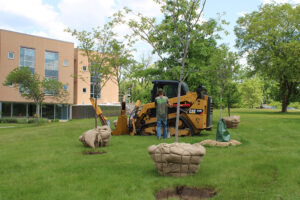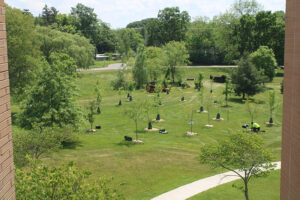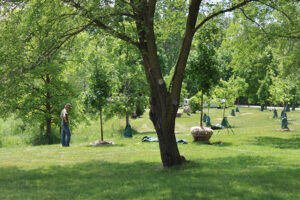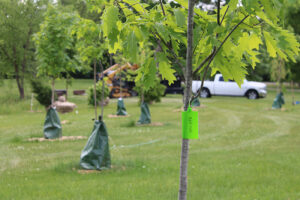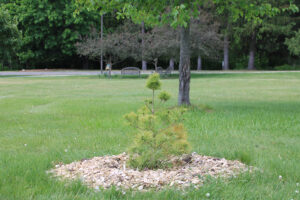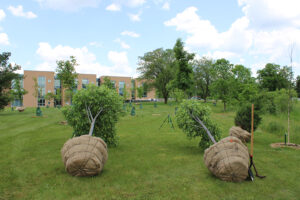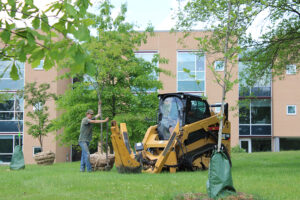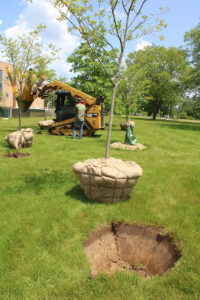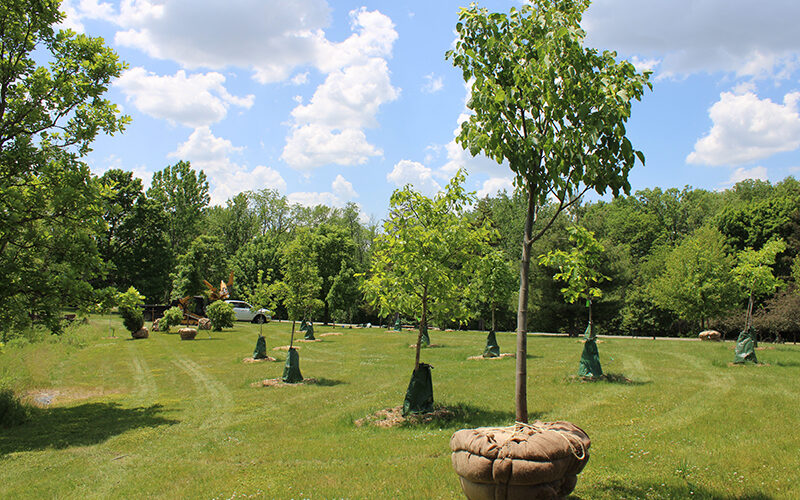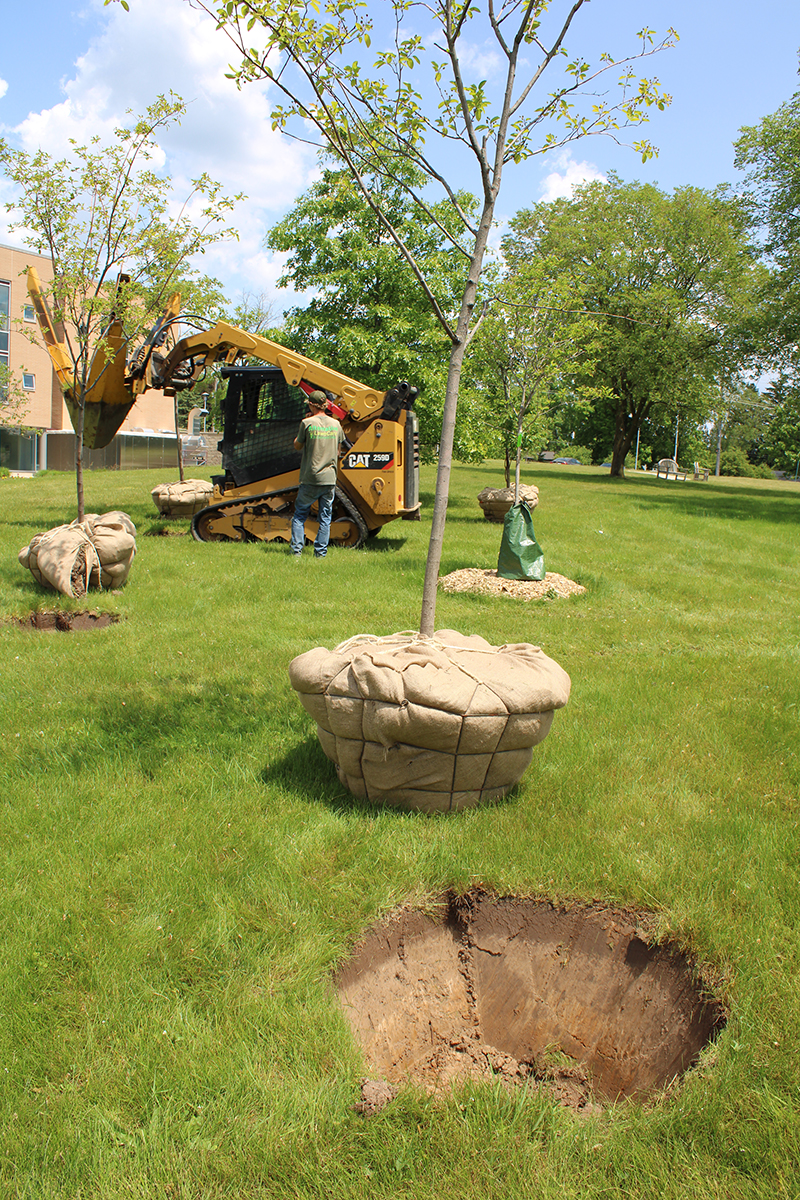
Dominican Sisters of Grand Rapids (DSGR) love God’s creation and celebrate, steward, and protect it. We work hard to assure that the Marywood campus – a greenspace in the City of Grand Rapids – continues to provide habitats for wildlife, supports biodiversity, and supports opportunities for ecological spirituality.
“Today, May 31, 2023, 21 trees were planted in our front yard. The trees include 10 Burr Oaks, 6 Serviceberry, 2 Red Spruce, and 1 Basswood,” says Kathi Sleziak, OP, project coordinator.
“In 2022, we initiated a re-foresting project,” says Sister Kathi. “Our goal is to plant 100 trees on the Marywood Campus grounds to expand the tree canopy in our City and neighborhood by 2027. Today’s planting brings our new tree count to 42.”
The Dominican Sisters joined a collaborative actualizing the City’s master plan goal of establishing a 40% tree canopy goal in Grand Rapids. The collaborative includes Friends of Grand Rapids Parks, Plaster Creek Stewards, and neighbors.
With support of our congregation’s Facilities team, Sisters, and the Friends of Grand Rapids Parks, the first set of trees (22) were planted on October 29, 2022. DSGR Facilities and Grounds crew will maintain the trees until well-established.
 This is a Laudato Si Action Platform Project
This is a Laudato Si Action Platform Project
One of the seven Laudato Si Action Platform Goals is: Response to the Cry of the Earth, which is “a call to protect our common home for the wellbeing of all, as we equitably address the climate crisis, biodiversity loss, and ecological sustainability.”
The Dominican Sisters ~ Grand Rapids’ Response to the Cry of the Earth takes many forms at Marywood in Grand Rapids, Michigan. Follow along on new developments on our blog. https://www.grdominicans.org/news/
LEARN MORE
Urban trees are widely accepted as one of the most effective long-term solutions to reducing the effects of urban heat islands and can lower ambient temperatures by 20–45°F (EPA 2015).
Trees can remove up to 60% of street-level air pollution, including carbon dioxide, ozone, nitrogen dioxide, sulfuric dioxide (a component of smog), and particulate matter (i.e., dust, ash, dirt, pollen, and smoke) (Coder 1996). This service has a very significant impact on public health.
Water Pollution Reduction
As cities grow, the amount of land that naturally absorbs rainwater (i.e., lawns, parks, fields, woods) tends to shrink, while hard surfaces that cause rain to runoff (i.e., roads, buildings, parking lots) increase in area. After flowing over roads, parking lots, and lawns, rainwater accumulates fertilizers, oil, chemicals, grass clippings, litter, pet waste, and other contaminants, polluting water. One mature deciduous tree can intercept over 500 gallons of rainwater a year, while a tree that holds leaves all year (e.g., pine, magnolia) can intercept up to 4,000 gallons per year (Seitz 2008). Source: https://www.urbancanopyworks.com/
Gallery
